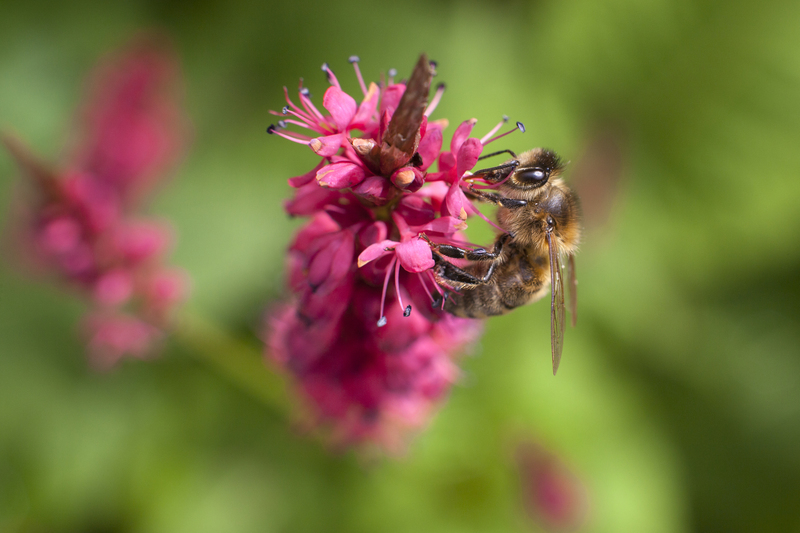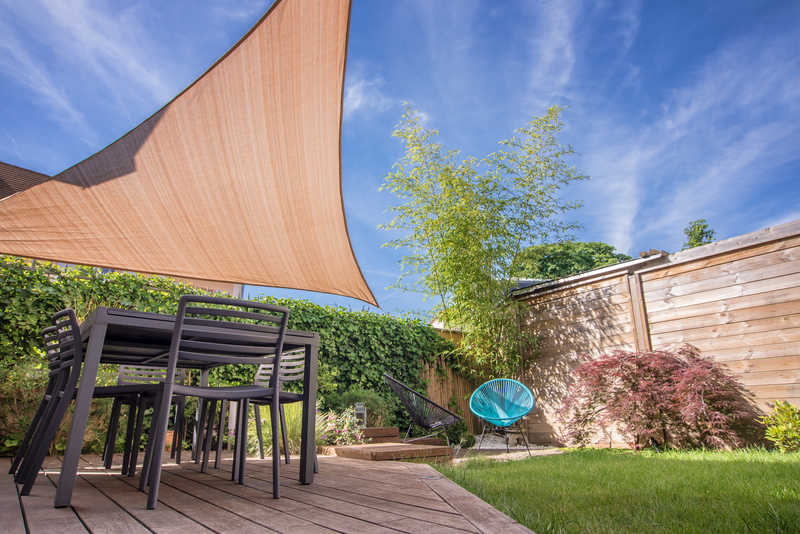Unveil Advanced Techniques for Perfect Hedge Designs
Posted on 22/08/2025
Unveil Advanced Techniques for Perfect Hedge Designs
Looking to take your garden aesthetics to the next level? Perfect hedge designs are the cornerstone of magnificent landscapes--whether in private gardens, public parks, or modern commercial settings. If you're ready to go beyond basic trimming and standard shapes, this comprehensive guide will unveil advanced techniques for hedge designs that combine botanical artistry with expert horticultural practices.
Table of Contents
- Why Hedge Designs Matter
- Essential Tools for Precision Hedge Shaping
- Choosing the Right Plants for Advanced Hedge Design
- Creating Complex Shapes: Advanced Trimming Techniques
- Mixing Textures & Colors for Unique Appeal
- Year-Round Maintenance Strategies
- Troubleshooting: Solving Common Hedge Design Challenges
- Innovation: Digital Tools & Modern Trends
- FAQs About Advanced Hedge Design Techniques
- Conclusion: Transform Your Landscape with Perfect Hedge Designs
Why Hedge Designs Matter
A hedge is much more than a green border. Beautifully crafted hedges serve multiple functional and aesthetic purposes in landscape design:
- Defining spaces and guiding movement
- Providing privacy
- Reducing noise and pollution
- Enhancing property value with curb appeal
- Creating microclimates for other plants
Essential Tools for Precision Hedge Shaping
Before diving into intricate hedge shaping techniques, it's crucial to gather the proper tools for the job. Quality equipment ensures cleaner cuts, healthier plants, and professional results.
Professional Hedge Trimming Toolkit
- Hedge Shears: For fast, straight cuts on softer growth
- Secateurs (pruners): For precision detail and tighter corners
- Long-Handled Loppers: Ideal for thicker branches or rejuvenation pruning
- Powered Hedge Trimmers: Efficient for large or uniform hedges
- Topiary Frames & Guides: Essential for advanced shapes and patterns
- Measuring Tape & Chalk Line: To ensure precise lines and symmetry
- Safety Gear: Gloves, goggles, and sturdy shoes for safe trimming sessions
Pro Tip: Always keep blades sharp and clean to ensure clean cuts, which reduce plant stress and disease risk.
Choosing the Right Plants for Advanced Hedge Design
Not all shrubs are created equal when it comes to hedge design sophistication. Selection is the foundation of success.
Best Hedge Species for Design Versatility
- Buxus sempervirens (Boxwood): Classic choice for tight shapes and topiary
- Taxus baccata (Yew): Slow-growing, dense, and long-lived
- Ligustrum (Privet): Fast-growing, great for quick structure
- Lonicera nitida (Shrubby Honeysuckle): Small leaves, easy to shape
- Carpinus betulus (Hornbeam): Tolerant of harsh trimming, attractive texture
- Photinia x fraseri: Vivid color, large leaves for broad patterns
Consider your local climate, growth rates, and leaf size for optimal results. For bold seasonal color, mix deciduous and evergreen hedges, or include flowering varieties for extra impact.
Creating Complex Shapes: Advanced Trimming Techniques
Perfect hedge designs demand patience, practice, and knowledge of advanced trimming methods. Here's how to move from boxy outlines to dazzling geometric or organic forms:
Top Advanced Shaping Techniques for Hedges
-
Espalier and Pleaching:
- Espalier: Training shrubs or trees to grow flat against a wall, requiring regular tying and selective pruning.
- Pleaching: Intertwining branches to create living lattice panels or tunnels, popular in formal gardens.
- Topiary Art: Sculpt hedges into ornamental shapes such as spheres, cones, animals, or abstract forms using wire frames as guides. Precision pruning is essential for keeping intricate forms crisp.
- Cloud Pruning: This Japanese-inspired technique shapes hedges into billowy, cloud-like clusters. It requires selective trimming to produce soft, whimsical profiles.
- Geometric Patterns & Tapering: Use plumb lines, stakes, and chalk to ensure straight lines, perfect circles, and even pyramids. Lightly taper hedge sides inward from base to top for a robust, stable structure and consistent sunlight exposure.
- Layered & Multi-Tiered Hedges: Stagger plants of different heights or colors to create eye-catching depth and texture.
Step-by-Step: Achieving Symmetry and Precision
1. Mark Key Points using guides and stakes for both height and width.
2. Use a Chalk Line or string between stakes to outline the edges and top.
3. Start Trimming from the Top Down, ensuring the sides are slightly angled inwards.
4. Constantly Step Back to check symmetry.
5. Fine-Tune Detail Work with secateurs or topiary shears for finishing touches.
Regular practice and a careful eye are the keys to mastering these advanced hedge trimming techniques. Each pass helps refine your skills in creating perfect hedge shapes and designs.
Mixing Textures & Colors for Unique Appeal
A hedge doesn't have to be a monochromatic wall! Integrating different plant textures, colors, and even blooming seasons can elevate your design:
- Alternate Plant Types: Combine evergreen and deciduous species for year-round interest.
- Utilize Foliage Contrasts: Pair fine-leafed box with broad-leafed photinia or variegated holly for dynamic texture.
- Add Flowering Shrubs: Incorporate lavender, viburnum, or fuchsia for seasonal bursts of color.
- Create Ombre Effects: Plant hedges in graduated color order from darkest to lightest greens or reds.
- Accent with Edging Plants: Use low mounding perennials or groundcovers along the hedge base.
This creative approach to hedge design brings individuality and appeal to formal schemes or naturalistic landscapes.
Year-Round Maintenance Strategies
Consistent, knowledgeable care is the secret to keeping advanced hedge designs sharp and healthy. Follow these season-by-season tips:
-
Spring:
- Shear to stimulate dense new growth and correct winter dieback.
- Apply balanced slow-release fertilizer to support healthy foliage.
- Mulch around the base to retain moisture and suppress weeds.
-
Summer:
- Maintain shape with light trims every 4-6 weeks for topiary or tight forms.
- Check for pest or disease outbreaks--act early with organic or targeted treatments.
- Water during dry spells, particularly for younger hedges.
-
Autumn:
- Give a last shaping trim before winter dormancy (but avoid heavy pruning late in the season).
- Remove fallen leaves and debris to prevent rot or fungal issues.
-
Winter:
- Inspect for snow or storm damage; gently shake off heavy snow to prevent branch breakage.
- Keep an eye out for signs of wildlife nibbling--consider guards for young plants.
Tip: The more intricate your hedge design, the more often you should inspect for gaps, uneven growth, or disease.
Troubleshooting: Solving Common Hedge Design Challenges
Even experienced gardeners sometimes run into issues with their perfect hedge shapes. Here's how to address the most frequent problems:
- Gaps or Thin Spots? Try rejuvenation pruning (cutting back harder in late winter/early spring), improve soil quality, or infill with matching plants.
- Brown or Patchy Hedges? Check for pests (aphids, scale, spider mites), fungal diseases, salt damage, or root suffocation from compacted soil.
- Uneven Growth? Ensure even light exposure--trim surrounding trees or nearby hedges that shade out sections.
- Misshaped Forms? Mark guidelines more carefully and trim little and often to preserve the intended shape.
Persistent issues may require soil testing and a conversation with a local arborist or horticultural consultant.
Innovation: Digital Tools & Modern Trends
The world of hedge design is constantly evolving--technology and new styles empower even beginner gardeners to create spectacular results.
- 3D Visualization Apps: Use gardening and landscape design apps to model your hedge shapes and experiment with planting combinations before making any cuts.
- Laser Guided Shears: For ultra-precise straight lines and curves, some advanced trimmers now include laser guides.
- Smart Irrigation: Integrate drip hoses with smart controllers to ensure consistent moisture for dense hedges.
- Sustainable Choices: More designers are choosing native, drought-tolerant species and wildlife-friendly hedges, balancing form and ecological function.
- Vertical & Living Walls: Modern architecture sees the rise of vertical hedge designs, including green walls and privacy screens using trellised shrubs.
Embracing the latest innovations in hedge design ensures your garden remains both cutting-edge and environmentally friendly!
FAQs About Advanced Hedge Design Techniques
What is the best time of year to shape hedges?
Most hedges can be trimmed in late winter or early spring, before the growing season starts. Regular, light pruning can continue throughout late spring and summer. Avoid heavy trimming in late autumn to prevent frost damage.
Which hedges are best for topiary?
Boxwood, yew, privet, and holly are outstanding for topiary and advanced shapes due to their dense growth and small leaves.
How do I keep my hedge design looking sharp all year?
Schedule light trims every few weeks during the growing season, remove stray growth immediately, and monitor regularly for pest or disease concerns.
Are there eco-friendly options for hedge design?
Absolutely! Choose native plants, avoid synthetic pesticides, mulch organically, and allow some hedge sections to flower for pollinator support.
Can I train fruit trees as hedges?
Yes, popular choices like apple, pear, or plum trees can be espaliered into beautiful, productive hedge walls.
Conclusion: Transform Your Landscape with Perfect Hedge Designs
Delivering perfect hedge designs is an art and a science. By harnessing advanced techniques--from creative plant choices to precision trimming, mixing textures, and innovative technology--you can cultivate hedges that frame, protect, and elevate your outdoor spaces. Start with a vision and careful preparation. With regular practice, your garden's hedges can become living works of art reflecting your unique style and skill.
Ready to begin? Gather your tools, choose your plants, and start experimenting with the advanced hedge design techniques outlined here. Your landscape will soon be the envy of the neighborhood!



